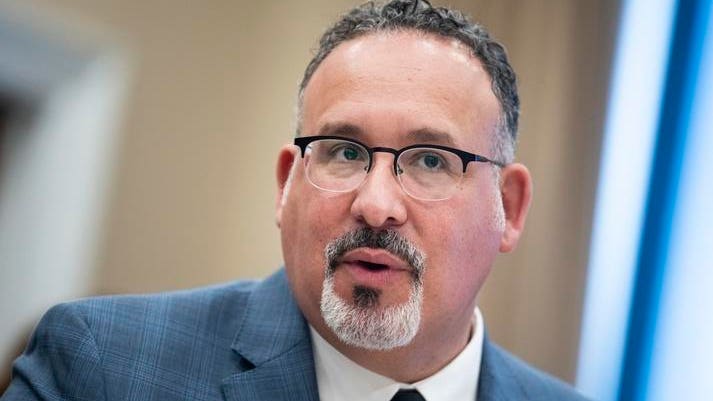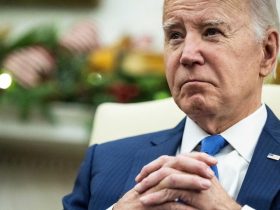The Biden administration has approved $10.5 billion in student loan forgiveness for 491,000 borrowers under a reformed program designed to provide debt relief to those with medical impairments, according to data released in an Education Department statement yesterday.
The Total and Permanent Disability, or TPD, discharge program can eliminate the federal student loan debt for borrowers who are unable to maintain substantial, gainful employment due to a disabling medical condition, which can be either physical or psychological. The TPD program has been around for many years, but has historically been mired in bureaucratic and administrative red tape. The confusing requirements and long application process had often made it difficult for disabled borrowers to navigate, resulting in consistent rejections or reversals of disability determinations.
Under reforms by the Biden administration, however, more borrowers are receiving student loan forgiveness through the program.
Temporary Reforms Streamlined Student Loan Forgiveness Under TPD Program
During the Covid-19 pandemic, the Biden administration implemented several temporary measures to streamline access to the TPD program and discharge the federal student debt for more borrowers:
- The Education Department instituted a data-sharing program with the Social Security Administration to identify borrowers who were disabled and would qualify for TPD discharge relief. These borrowers had their federal student loans automatically forgiven under the TPD program, without having to affirmatively apply.
- The administration also suspended post-discharge income-monitoring. Under federal rules, borrowers approved for student loan forgiveness under the TPD Discharge program were subject to three years of income monitoring following their approval date. Borrowers who earned more than a minimal amount of income from employment, and those who failed to complete and submit required monitoring paperwork (which could be challenging for those with physical or psychological impairments), could have their loan forgiveness reversed and their balances reinstated. The Biden administration ordered the Education Department to temporarily stop monitoring borrowers’ income during the pandemic.
- The Education Department also reversed tens of thousands of TPD Discharge reinstatements that had occurred due to borrowers’ failure to respond to income-monitoring requests. These borrowers were able to have their reinstated loans restored back to a discharged status.
New Regulations Expand Access To Student Loan Forgiveness Through TPD Program
The temporary flexibilities associated with the Covid-19 pandemic have now ended. However, on July 1, the Education Department activated new regulations governing the TPD discharge program. These new rules build upon the Biden administration’s temporary pandemic-era relief, and will further expand access to federal student loan forgiveness for disabled borrowers.
First, the new regulations codify the end of post-discharge income monitoring. This does not completely eliminate the three-year post-discharge monitoring period, but it does eliminate income monitoring, specifically. With income no longer considered, the only way borrowers can get their forgiven loans reinstated now is by taking out new federal student loan debt during the three years following a TPD discharge, or by receiving a Social Security determination that they are no longer disabled.
In addition to continuing the data-sharing initiative between the Education Department and the Social Security Administration to identify eligible borrowers, the new regulations expand the pool of Social Security benefits recipients who can qualify for student loan forgiveness through the TPD program. Before, only borrowers receiving Social Security disability benefits with a five-to-seven year medical review period could qualify. Now, however, borrowers can qualify if they meet any of the following criteria:
- Your next continuing disability review has been scheduled within five to seven years from the date of your last Social Security disability determination.
- Your next continuing disability review for Social Security has been scheduled at three years.
- You have a medical onset date for SSDI or SSI benefits of at least five years before applying for student loan forgiveness under the TPD discharge program.
- You qualify for SSDI or SSI based on a compassionate allowance.
- You are currently receiving Social Security retirement benefits, and immediately before qualifying for those benefits, you met one of the requirements above.
Borrowers who don’t qualify for student loan forgiveness under the TPD discharge program based on receiving Social Security benefits can still apply with a physician’s certification, whereby their medical provider certifies on the application that they meet the program’s criteria for discharge. Previously, only a medical doctor or Doctors of Osteopathic Medicine could complete the physician’s certification. However, the new TPD regulations expand the pool of eligible providers to include physician assistants, nurse practitioners, and certified independent psychologists. This will make it easier for many disabled borrowers to apply for loan forgiveness, since many primary providers are not always M.D’s or D.O.’s.
Borrowers can also qualify for student loan forgiveness through the TPD discharge program if they are 100% disabled due to a service-related disability, as determined by the Department of Veterans Affairs.
Taxation Associated With Student Loan Forgiveness Through the TPD Program
Historically, loans forgiven under the TPD discharge program could be taxed as income to the borrower. Under temporary tax changes enacted by Congress in 2017 and in 2021, this type of loan forgiveness has been tax-free under federal law for the last several years. However, these temporary exemptions are scheduled to sunset at the end of 2025, unless they are renewed or extended by Congress. But borrowers who receive TPD discharges before the expiration date may still incur tax consequences.
“As a result of a change in tax law, loan balances that are discharged due to TPD are not considered income for federal tax purposes if you receive the discharge during the period from January 1, 2018 through December 31, 2025,” says a statement on the website for Nelnet, the Education Department’s TPD Discharge loan servicer. “If you qualify for a TPD discharge based on documentation from the U.S Department of Veterans Affairs (VA), the date you are considered to have received the discharge for tax purposes is the date that we approve the discharge. If you qualify for a TPD discharge based on documentation from the Social Security Administration or a licensed medical professional’s certification, the date you are considered to have received the discharge for tax purposes is the completion date of your three-year post-discharge monitoring period.” There could be state tax consequences, as well.
Borrowers looking to apply for student loan forgiveness under the TPD discharge program should consult with a tax advisor before proceeding.
Further Student Loan Forgiveness Reading
6 Student Loan Forgiveness And Repayment Updates As Interest Starts Accruing
Education Department Suggests More Student Loan Forgiveness Approvals This Month
Timeline For Biden’s New Student Loan Forgiveness Plan Gets Clearer
Student Loan Forgiveness Update: What The Latest Court Victory Means For Borrowers
Read the full article here













Leave a Reply